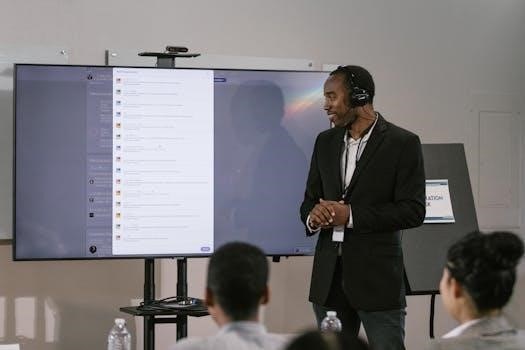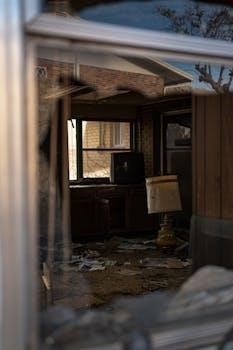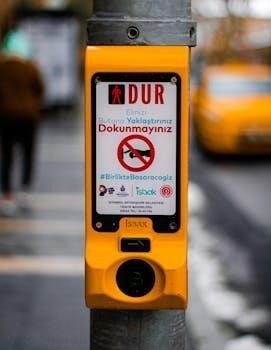Real Fyre Remote Instructions Overview
Real Fyre offers remote control systems, like the RR1A and RR2A, for their gas log sets, enhancing user convenience. These remotes often work with both vented and vent-free ON/OFF controlled burners. The systems are designed to be installed within solid-fuel burning fireplaces.
Understanding Real Fyre Remote Systems

Real Fyre remote systems, including models like RR1A and RR2A, are designed to provide seamless control over compatible gas log sets. These systems typically operate on a millivolt valve, enabling on/off functionality. They are not just simple on/off switches, often integrating with various control options like wall thermostats or smart phone applications to control your Real Fyre gas logs. These remotes are compatible with select Real Fyre vented and vent-free burners offering flexibility. Understanding these systems starts with recognizing the difference between manual and remote operation. Manual operation implies direct control of the gas valve, whereas remote systems introduce wireless control for added convenience. The remote receivers are installed within the fireplace, often positioned away from the burner to ensure proper functioning. Furthermore, the system often operates on batteries, requiring periodic checks and replacements. The systems are built to work in conjunction with the Real Fyre burners, ensuring reliable flame ignition and control. These remote systems have components including the remote transmitter and a receiver unit installed in the fireplace, that communicate wirelessly to control the fire. The remote system facilitates an effortless experience when enjoying the fireplace, allowing users to manage the flame from a distance.

Quick Start Guide for RR1A and RR2A Remotes
The RR1A and RR2A remotes are designed for quick and easy operation. To begin, ensure that the remote receiver is properly installed within the fireplace, away from direct heat. Check that the required AA batteries are correctly inserted into both the remote transmitter and the receiver unit. The initial step usually involves synchronizing the remote with the receiver which is often done by following a short procedure. Usually there is a button on the receiver that when pressed will allow a signal to be sent from the remote to the receiver. Once synchronized, the remotes typically feature a simple on/off button to control the flame. For manual light, the remote receiver should be set to the OFF position. The remotes may also offer additional features, such as adjustable flame settings or timer functions but always refer to the included manual for specific features. Familiarize yourself with the remote’s controls before attempting to ignite the fireplace. These remotes are intended for use with specific Real Fyre burner models. Always compare the picture on the website with the actual part in your fireplace to ensure compatibility. Regular maintenance of the remote system, including checking battery levels, is crucial for its smooth operation.
Compatibility with Real Fyre Burners
Real Fyre remote systems, including the RR1A and RR2A, are specifically engineered to work with a range of Real Fyre burners. These burners include both vented and vent-free models that are equipped with an on/off millivolt valve. The remotes are compatible with selected Real Fyre vented and vent-free ON/OFF controlled burners. It is important to ensure the compatibility of your specific burner model and the remote before use. The remotes are not designed for use with all gas log sets. Compatibility information can be found in the Real Fyre manuals or catalogs. The remote is designed to work with a millivolt valve which is common in many of these sets. Certain series like the G8, G9, and G10 are often compatible, but always consult your specific burner’s documentation. Using an incompatible remote can lead to operational issues or damage, it is therefore important to check the compatibility. The burner system is designed for installation within a solid-fuel-burning fireplace with a working flue. Always verify the model number of the burner and ensure that it is listed in the remote’s compatibility information. Avoid using the remote with burners not specifically mentioned for compatibility.

Installation and Setup
Proper installation is crucial for the Real Fyre remote system to function effectively. This involves correctly placing the remote receiver within the fireplace and ensuring that the batteries required for operation are properly installed. It is important to follow the manual.
Remote Receiver Placement within Fireplace
The placement of the remote receiver within your fireplace is a critical step in the installation process, directly affecting the reliability of your Real Fyre remote system. The receiver should be positioned as far away from the burner system as possible, typically at the front right corner of the fireplace, to avoid excessive heat exposure, which could damage the receiver’s electronics. Ensure the area is free from obstructions, allowing for a clear signal path between the remote and the receiver. For models like the 2VT, it is important to securely mount the receiver using the provided bracket and screw, also it should be positioned to facilitate easy access for battery replacement when needed. The receiver should not be in direct contact with any metal parts of the fireplace, this could interfere with the signal. A stable and well-placed receiver will also prevent accidental disconnections and ensure that your remote operates without issues. Always refer to the installation manual for specific instructions related to your model, since variations in fireplace design may require slight adjustments to the placement. Proper positioning of the receiver is not just about function; it also aids in extending the lifespan of your remote system.
Battery Requirements for Remote Operation
The efficient operation of your Real Fyre remote control system heavily relies on the correct installation and power supply from its batteries. For many models, specifically those like the 2VT, the system typically requires 4 AA batteries to function properly. It is crucial to use high-quality alkaline batteries to ensure optimal performance and longevity of the remote system. Always make sure that the batteries are inserted correctly, adhering to the polarity markings (+ and -) within the battery compartment of both the remote and receiver units. Failure to do this can lead to malfunction or even damage to the system. Regularly checking the batteries is advisable; replacing them annually, or when the remote’s response becomes intermittent, can prevent unexpected interruptions in the remote operation. Low battery power may cause the remote to fail to communicate with the receiver, affecting the functionality of your gas logs. It’s also a good idea to remove the batteries if the system will not be used for an extended period, as this will prevent possible corrosion and battery damage within the devices. Always use the same type and brand of batteries in the units to maintain consistent power supply and remote control functionality.

Operation and Troubleshooting
Real Fyre systems offer both manual and remote operation modes. Ensure to check for gas leaks after installation using safe methods. If you encounter issues with the remote control, refer to the manual for troubleshooting steps.
Manual Light Mode vs Remote Control
Real Fyre gas log systems offer users the flexibility of operating their fireplaces through two distinct methods⁚ manual light mode and remote control operation. The manual light mode typically involves using a control knob, often found on the valve assembly, to ignite the burner. This method requires direct access to the fireplace and the valve mechanism. In contrast, remote control operation provides a more convenient way to manage the fireplace. This method allows users to ignite or extinguish the flames, and in some cases, adjust the flame height without needing to physically interact with the valve.
The remote control, like the RR1A or RR2A models, typically communicates with a receiver unit installed within the fireplace. The receiver unit interacts with the valve system to control the gas flow to the burner. In most scenarios, the remote system requires batteries. Manual light mode is useful as a backup, should the remote system fail. The choice between manual and remote control depends on the user’s preference, the fireplace setup, and the desired level of convenience.
Checking for Gas Leaks After Installation
After installing a Real Fyre gas log system, including the remote control components, it is crucial to check for gas leaks. This is a safety measure to ensure that the system operates correctly and without posing any risks. The primary method for checking gas leaks is to apply a soap and water solution to all gas connections. This includes connections at the gas valve, the burner, and any points where the gas line connects to the fireplace system. If there is a leak, bubbles will appear in the soapy solution.
Never use an open flame to check for leaks, as this could lead to an explosion. If bubbles appear, or if you smell gas, immediately turn off the gas supply at the source. Contact a qualified gas technician or your local gas company to repair the leak. It is better to be overly cautious when dealing with gas. Regular leak checks are advisable, especially after any maintenance or adjustment to the fireplace system. Ignoring a gas leak can be extremely hazardous.
Troubleshooting Remote Control Issues
When encountering issues with your Real Fyre remote control, there are several steps you can take to diagnose the problem. First, ensure that the batteries in both the remote and the receiver are fresh and correctly installed. Low batteries are a common cause of remote malfunction. If the batteries are not the issue, verify that the remote receiver is properly positioned within the fireplace, away from the burner, as specified in the installation guide. The receiver should not be obstructed by any objects that might interfere with its signal;
If the remote still fails to operate, check the manual for specific troubleshooting steps related to your model. Some systems may have a reset procedure that can restore functionality. If there is no light or response from the remote or the receiver, you may have a problem that requires professional attention. Always ensure that the system is compatible with the remote. If the problem persists after these steps, contact Real Fyre customer support for assistance. Do not attempt repairs yourself unless you are qualified to do so.



